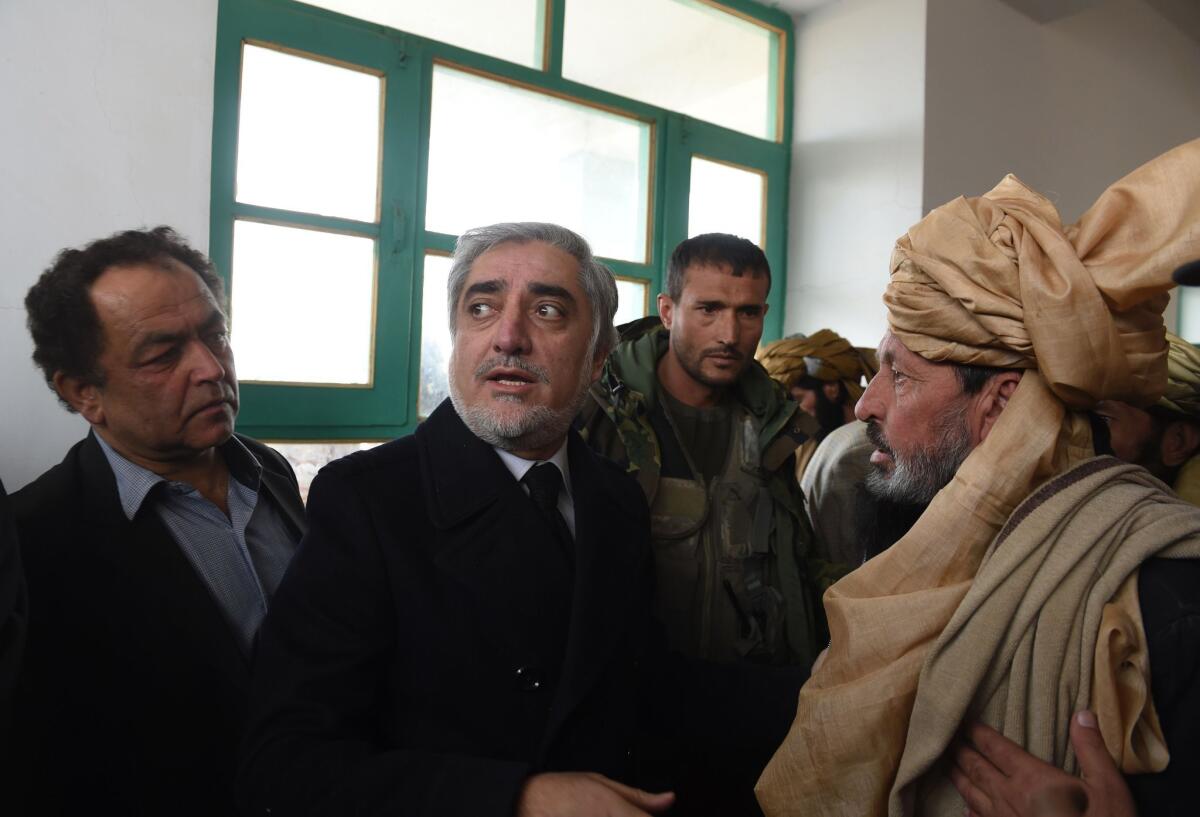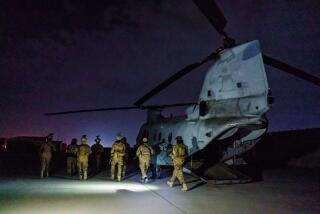No deal yet with the Taliban, but Trump is planning big cuts in U.S. presence

WASHINGTON — Another round of talks aimed at resolving nearly two decades of fighting in Afghanistan has ended without a deal, but the Trump administration is moving ahead regardless with plans to substantially cut the number of U.S. troops and diplomats in the conflicted country.
An overly hasty downsizing of U.S. military, diplomatic and aid personnel could risk sacrificing some of the progress made in human rights and development, some experts warn — especially if no meaningful peace treaty is in place. At the same time, U.S. patience for America’s longest conflict is at an end.
Zalmay Khalilzad, the adminstration’s special envoy for Afghan peace talks, was headed back to Washington on Wednesday to “consult the next steps” after what he described as 10 days of “productive” talks with Taliban leaders in Qatar that focused on technical issues.
”I hope this is the last Eid where #Afghanistan is at war,” he said in a Twitter message marking the Islamic holiday. “I know Afghans yearn for peace. We stand with them and are working hard toward a lasting & honorable peace agreement and a sovereign Afghanistan which poses no threat to any other country.”
The deal that Khalilzad is attempting to negotiate with the Taliban would remove around half of an estimated 20,000 U.S. and other foreign troops from Afghanistan in exchange for guarantees that the country would not once again host radical Islamic militants.
Khalilzad suggested some progress had been made on those points. But it appeared that virtually no advances were made on other U.S. demands, including that the Taliban also negotiate directly with Afghan government officials. The Taliban does not recognize the government in Kabul, saying it is a puppet of the West.
Another key sticking point is declaring a cease-fire. The U.S. is insisting on a halt to bloodshed, but the Taliban sees violence as a potent tool. It had continued detonating bombs and attacking security forces even as the talks dragged on. Taliban representatives also are warning Afghan citizens against voting in next month’s presidential election, threatening to attack election sites.
Secretary of State Michael R. Pompeo had set that election as a potential deadline for reaching an agreement. More recently, he said he expected troop numbers to come down significantly by the 2020 U.S. presidential election — and he made clear his boss insisted on it. President Trump has repeatedly said he wants the troops home.
“We hope that overall the need for combat forces in the region is reduced,” Pompeo told an interviewer late last month, emphasizing Trump’s preference for a drop. “It would be job-enhancing.”
At the same time, the State Department has been paring down the size of the U.S. Embassy in Kabul, the largest diplomatic mission it has overseas. This is seen as a declaration that the Trump administration is serious about leaving Afghanistan, and also is part of a broader downgrading of U.S. diplomatic presence worldwide made as part of Trump-ordered budget cuts.
Some experts in Afghanistan are concerned that a reduction in the thousands of people who work at the embassy or in civilian U.S. aid programs might be premature, given the raft of complex problems that continue to haunt the country. The United States has been spending millions of dollars on varied efforts including women’s rights, education, housing and water, hoping to help rebuild Afghanistan.
Trump and Pompeo, however, have based their “America first” foreign policy in part on getting out of the nation-building business. The concern of aid agencies is that the rug will be pulled out from under their work if the Americans leave precipitously. On the other hand, there is widespread consensus among Afghans that the time has come to end the major U.S. presence.
Regular violence remains a problem. Last year was the deadliest yet for civilians since the U.N. began keeping a record a decade ago, with almost 4,000 civilians killed and more than 7,000 injured. More than 60% of the deaths and injuries last year were attributed to anti-government elements, mainly the Taliban and an Islamic State affiliate; nearly 25% were caused by pro-government forces, often backed by U.S. airstrikes, according to the U.N. figures.
“A complete military exit from Afghanistan today would be even more ill-advised and risky than the Obama administration’s disengagement from Iraq in 2011,” Gen. David H. Petraeus, the retired Army general who commanded international troops in Iraq and Afghanistan, wrote in an opinion piece published by the Wall Street Journal over the weekend. “If the Trump administration orders a full pullout from Afghanistan, there is considerably less doubt about what will happen — full-blown civil war and the re-establishment of a terrorist sanctuary as existed when the 9/11 attacks were planned there.”
Petraeus, also a former CIA director, co-wrote the column with Vance Serchuk, a fellow at the Center for a New American Security, a think tank in Washington.
There are other downsides to an overly swift withdrawal of U.S. military and civilian forces. The 300,000-strong Afghan army is being trained by U.S. and NATO forces, backed by a $6-billion fund, of which the U.S. contributes $5 billion. But the army remains woefully inadequate to battling the Taliban or providing basic protection of the population. And experts warn that the U.S. needs to continue to have eyes on the ground to monitor vast U.S. foreign assistance money that has already been dispersed, even if overall U.S. aid is reduced.
“We need to design our downward trajectory thoughtfully and based on conditions for civility going forward,” said Annie Pforzheimer, former deputy chief of mission at the Kabul embassy and a retired veteran diplomat.
The United States formally ended its engagement in Afghanistan in 2014 but has continued to work in the country it invaded in 2001, after the Sept. 11 terror attacks.
Special correspondent Stefanie Glinski in Kabul contributed to this report.
More to Read
Sign up for Essential California
The most important California stories and recommendations in your inbox every morning.
You may occasionally receive promotional content from the Los Angeles Times.










